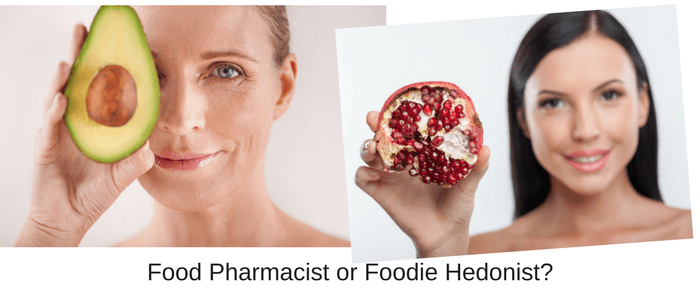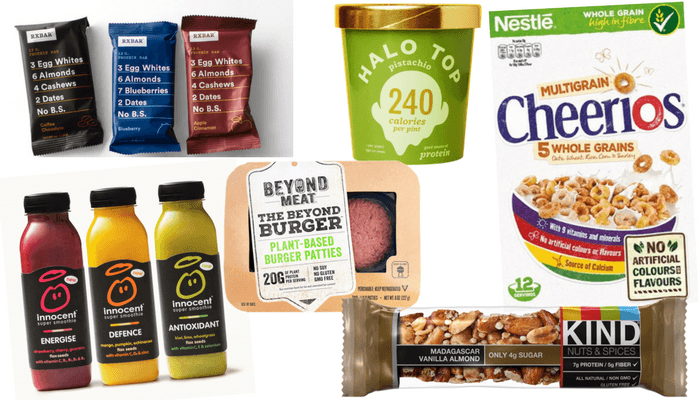7 facts you need to know to successfully exploit the wellness & wellbeing trend
Wellness & wellbeing are amongst the hottest trends this year.
But innovating wellness & wellbeing aren’t easy. We’ve seen lots of concepts crash and burn.
So, what does the forward-looking innovator need to know before they can capitalise on the trend?
We’ve completed a number of projects digging into wellness & wellbeing themes across Europe and the USA this year, so we thought now might be a good time to share some of our observations …
Wellness vs Wellbeing
Although the words wellness and wellbeing are often used interchangeably, there are subtle but important differences between them.
In markets like the UK, Germany and France, wellness is spontaneously associated with the avoidance of sickness. As a result, consumers often initially make connections with medicines and health-protection products. However, it doesn’t take much prompting to get them to recognise the potential for association to be made between ‘wellness’ and the positive, health-bringing properties of naturally, functional-foods.
In southern-European markets, consumers frequently associate wellness not just with functionally good food, but also more emotional variables like friendship and family. In fact, without all of them, many Mediterranean consumers cannot conceive they would ever be truly well.
In Scandinavian markets, there’s a degree of cynicism about wellness, as it has been associated with the relatively cynical marketing of everything from spa-days to marginally less-bad foodstuffs.
Interestingly, wellbeing is frequently perceived across cultures as an altogether more holistic concept, which embraces not just physical and mental wellness, but also elements of spiritual, social and personal fulfilment.
In studies, we’ve completed, wellbeing is frequently associated with some element of ‘positive balance’ in terms of personal moderation: ‘not too much or too little of anything’ or extracting pleasure from small things and ‘living in the moment’!
The key out-take is that both wellness & wellbeing are highly-positive benefits and well worth exploring as ways of innovating your propositions.
Targeting Wellness & Wellbeing Propositions
Food Pharmacists
Food Pharmacists are highly engaged with the idea that carefully chosen foods can help regulate their wellness & wellbeing. They’re frequently well-educated in regard to the properties and functional-qualities of food – and place a proportionally greater emphasis on the quality and integrity of the food they eat.
Food Pharmacists will often place a disproportionate emphasis on sourcing ‘essential nutrients’ – because promoting and maintaining their own and their family’s wellness, using nature’s pharmacy, is a significant motivation.
Hedonists or Foodies
Hedonists or Foodies tend to gratuitously enjoy food for its own sake. They love food’s tastes, textures and the sensory joy it brings. They often care passionately about food’s quality, but more for the impact quality has on taste than its nutraceutical powers.
We’ve learned that careful tailoring of both wellness & wellbeing propositions is essential if you are going to unlock successful propositions
Technical Enablers of Wellness & Wellbeing
Whilst it is possible to unlock wellness benefits via less-unhealthy versions of existing products, these half-hearted propositions based on ‘less of the bad stuff’ frequently fall far-short of their full potential.
So, what are the tricks to unlocking the full potential of wellness & wellbeing?
Based on the projects we have executed recently, Both Pharmacists and Hedonists place significant emphasis on naturalness, wholesomeness and integrity when it comes to foods that promise to deliver wellness or wellbeing
As marketers and food-scientists, this potentially provides us with lots of levers
When designing Wellness and Wellbeing propositions we have discerned that there are a number of highly successful potential strategies
- Functional Claim: Boldly make a permitted ‘functional’ claim based on science which has been approved by EFSA or an equivalent, regionally-relevant food safety-agency. The huge positive advantage of this strategy is that it allows you to make clear, relevant claims on-pack!
- Functional Ingredient: Building on an ‘ingredient of the month’ trend by leveraging Google-Wisdom by incorporating recognisable ingredients into your products – and leaving it to consumers to recognise their potential benefits
- Relative Claim: Deliver less-unhealthy versions of existing favourites, whilst at the same time significantly dialling-up the wholesomeness and naturalness credentials of your ingredient carriers. In this way consumers are forced to make relatively few behavioural adaptions – whilst at the same time accessing valuable new benefits
We’ve seen examples of all three working really successfully
So, why is successfully innovating wellness & wellbeing so hard?
Based on the projects we have delivered recently for clients, we’ve identified 7 key factors you need to address if you’re going to successfully harness the wellness / wellbeing trends:
# 1 Consumers are Seeking ‘Control’
The unifying factor of both Pharmacists and Hedonists is that they are keen to use the power of ‘good food’ to manage and improve health. It would frequently be easier to ‘just take pills’, but they choose not to. Their mission is to take control of their wellness and wellbeing for themselves by accessing relevant benefits from ‘natural’ food.
The most successful concepts and propositions tend to be the ones that support this personal commitment, rather than take their sense of personal ‘success’ away
# 2 Consumers are Confused
However well-informed consumers are, or would like to believe they are, the majority struggle with the apparent contradictions of scientific ‘fact’.
It isn’t just that they struggle to understand how ‘facts’ that have been accepted as true for decades, can be challenged and overturned within a matter of months, but that ‘so-called experts’ frequently can’t agree amongst themselves about the ‘truth’.
Consumers desperately want their science ‘facts’ to be simple and consistent. They don’t get why they can’t ‘have it all’, and struggle with the idea that the regime they may need to follow to deliver one desired health-benefit, might actually be preventing them benefiting from another equally desirable health-outcome.
The most promising concepts tend to be those that are made unambiguously, help with navigation and provide reassurance
# 3 Consumers struggle to Trust
Both Pharmacists and Hedonists have turned to food because they increasingly distrust ‘hard’ science. Sadly, scientists are increasingly seen as the corrupters and adulterators of good food, rather than benign deliverers of additional benefits.
Broadly, both Pharmacists and Hedonists would prefer active ingredients to come from natural & un-processed sources. However, we’ve noted that fortification with active ingredients can be acceptable, as long as the fortified properties are perceived to be naturally occurring within your ‘hero’ ingredients.
# 4 Consumers Seek ‘Authenticity’
We have detected a distinct preference for concepts which contain an element of authentic ‘storytelling’. This can come from an ‘accidental discovery’, some ‘imperfection’ in the process or product, or even an element of ‘personal craft’ in the invention or preparation of the product.
The concepts that Pharmacists and Hedonist favour tend to be those that offer relevant functional benefits in conjunction with authenticity, craft and a human face. It’s almost like they are rejecting not just over-processed and mass-produced products, but also those that are just a little too-perfect to be believed.
# 5 Consumers are Wishful
Whilst some Pharmacists are fully committed to the cause of functional eating and orientate their whole diet towards a single-minded goal, many Pharmacists and Hedonists tend to ‘fool themselves’ about how rigorously they are adhering to their ‘wellness or wellbeing’ diet.
Concepts which require a significant readjustment to consumers’ natural patterns of eating or consumption behaviour are much harder to establish and maintain within consumers’ regimes. Whereas those that require only modest or no behaviour-change can be easier to establish.
Ironically, those that do force the establishment of positive behaviour change can be the most successful overall – they key is to access existing nourishment – at the same time as delivering relevant and novel wellness and wellbeing benefits
The one thing we’ve learned is – that consumers are seldom as rigorous about following a wellness or wellbeing regime as they would like you to believe!
# 6 Consumers need positive Feedback
Most consumers’ wellness and wellbeing challenges tend to be long-term, if not life-long. So, one of the key challenges for a novel functional-food or beverage, tends to be establishing itself into the users’ regular life-routine
Yes, loyalty does exist, but only when consumers either feel a significant, positive wellness or wellbeing benefit from your proposition that they don’t want to give up – or when your solution is meeting multiple ‘layers’ of needs as well as delivering some form of ‘positive feedback’
We’ve discovered that it is possible to build ‘positive feedback loops’ into consumers’ relationship with the proposition at a physical, experiential, behavioural and even at an app-based tracking level. I guess the perfect solution to maximise ‘feedback addiction’ would ideally be to incorporate all of these!
# 7 Consumers are Conflicted
One of the biggest potential barriers to becoming part of a consumer’s life-long routine tends to be the widely help perception that healthy food seldom tastes good.
Pharmacists tend to be the group that is most committed to extracting wellness and wellbeing benefits from food, so are frequently prepared to accept some compromise on taste in order to obtain its full wellness or wellbeing benefits.
Hedonists want healthy food – but they will seldom compromise on taste or sensory experience.
The challenge is to develop food experiences that are enjoyable … as well as capable of bringing functional wellness and wellbeing benefits.
What is the secret to successfully exploiting the wellness and wellbeing trend?
One of our key learnings is that, before you start trying to exploit the wellness or wellbeing ‘wave’, you need to fully understand what motivates your potential consumers.
Without a deep understanding of their current situation, their family context, the health histories of their forebears, the challenges being faced by their partners or their extended social networks … you will inevitably fail to create a sufficiently well-structured proposition to succeed.
- Do they suspect they face genetic challenges – predisposing them to future illness
- Do they suspect they suffer from food intolerances or allergies?
- Are their parents healthy – or do they perceive they might suffer health issues
- Do they aspire to a specific lifestyle: vegetarian or flexitarian, runner or weightlifter?
- Or are they just joe-average parents trying to do their best for their fast-growing family!
Once you’ve got great insights into their motivations, identifying relevant benefits, crafting compelling claims, creating compelling RTBs and building an engaging multi-dimensional back-story becomes totally achievable
Unlocking the wellness / wellbeing opportunity can easy – but only if you have the right approach, partners and materials to create a compelling proposition



